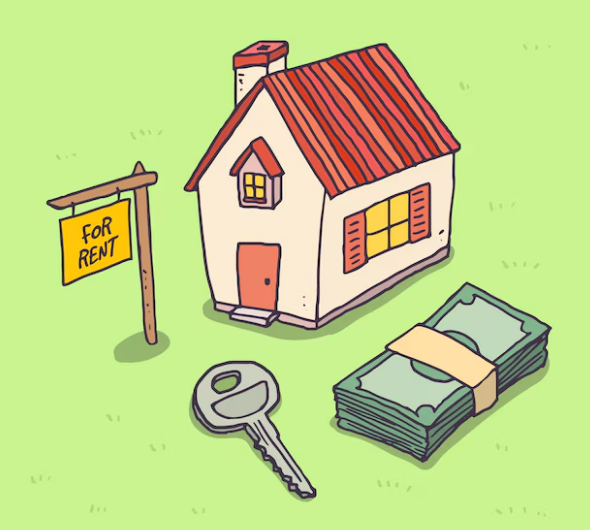Undertaking a home renovation project can be an exciting yet daunting task. Whether you’re looking to update your kitchen, add an extra room, or improve your home’s energy efficiency, renovations often come with a hefty price tag. Financing these projects requires careful planning and consideration to ensure that you not only achieve your desired outcomes but also manage your finances wisely.
Understanding the various financing options available for home renovations is crucial. Each option comes with its own set of benefits and potential drawbacks, so it’s important to consider your financial situation, the scope of your project, and your long-term goals before making a decision. This guide will walk you through the key factors to consider when financing home renovations in the U.S.
Exploring your financing options

When it comes to financing home renovations, there are several options available, each catering to different needs and financial situations. The right choice for you will depend on the size of your project, your credit score, the equity in your home, and how much you’re willing to borrow.
- Home equity loans: A home equity loan allows you to borrow a lump sum against the equity in your home. This type of loan typically offers a fixed interest rate and a set repayment term, making it a predictable option for homeowners who prefer consistent monthly payments. Because your home is used as collateral, home equity loans often come with lower interest rates than unsecured loans. However, it’s important to consider that failure to repay the loan could result in the loss of your home.
- Home Equity Line of Credit (HELOC): Similar to a home equity loan, a HELOC also allows you to borrow against your home’s equity, but instead of receiving a lump sum, you’re given a line of credit that you can draw from as needed. HELOCs typically have variable interest rates, which means your monthly payments can fluctuate over time. This option is ideal for larger renovation projects where costs might vary, as it provides the flexibility to borrow only what you need when you need it.
- Cash-out refinance: A cash-out refinance involves replacing your existing mortgage with a new one that’s larger than your current balance. The difference is paid out to you in cash, which you can then use to fund your renovations. This option can be attractive if current mortgage rates are lower than your existing rate, as it allows you to refinance your mortgage and access the cash needed for renovations at the same time. However, you’ll need to factor in the closing costs associated with refinancing, as well as the potential extension of your mortgage term.
- Personal loans: For homeowners with good credit, a personal loan can be a viable option for financing smaller renovation projects. Personal loans are typically unsecured, meaning they don’t require collateral, but they often come with higher interest rates compared to home equity loans or HELOCs. The advantage of a personal loan is that it’s not tied to your home, so there’s no risk of foreclosure if you’re unable to make payments. However, the higher interest rates can make this option more expensive in the long run.
- Credit cards: Using a credit card to finance home renovations should generally be a last resort due to the high interest rates associated with credit card debt. However, for smaller projects or for covering immediate expenses while waiting for other financing to come through, a credit card can offer convenience and flexibility. Some credit cards also offer promotional 0% APR periods, which can be advantageous if you’re able to pay off the balance before the interest kicks in. It’s important to be cautious with this option, as carrying a large balance on a high-interest card can quickly become costly.
Assessing the scope and cost of your renovation
Before deciding on a financing option, it’s crucial to have a clear understanding of the scope and cost of your renovation project. This includes not only the estimated costs for materials and labor but also potential unexpected expenses that may arise during the project.
Start by obtaining detailed quotes from contractors or service providers. This will give you a realistic idea of how much the renovation will cost and help you determine how much financing you’ll need. It’s also a good idea to add a contingency fund of 10-20% of the project’s total cost to cover any unforeseen expenses, such as hidden structural issues or changes in material prices.
Consider the scale of your project and whether it makes sense to finance the entire renovation at once or break it into phases. For larger projects, such as a complete kitchen remodel or an addition, a HELOC or home equity loan may be more appropriate due to the flexibility and lower interest rates. For smaller updates, like painting or minor repairs, a personal loan or even savings may be sufficient.
Understanding the potential return on investment (ROI) of your renovation is also important. Certain home improvements, such as kitchen and bathroom remodels or energy-efficient upgrades, tend to increase the value of your home and can provide a good return when it’s time to sell. However, more personalized or niche projects might not yield the same ROI, so it’s essential to weigh the benefits against the cost before committing to a large renovation.
Making the right decision for your home and finances
Financing a home renovation in the U.S. involves careful planning and consideration of your financial situation, the scope of your project, and the available financing options. By thoroughly assessing your needs, understanding the costs, and evaluating the risks and benefits of each option, you can make an informed decision that aligns with your financial goals and enhances the value of your home.
Whether you choose a home equity loan, a HELOC, a personal loan, or another financing method, the key is to approach the process with a clear plan and a realistic understanding of what you can afford. With the right strategy, you can achieve your renovation goals while maintaining financial stability and preparing for a secure financial future.






